For “Winged Wednesday”:
Scripps's Murrelet.
“The Scripps's Murrelet is a newly recognized species, a split from the population of Xantus's Murrelet once known as the "northern" race. Xantus's Murrelet was split into Scripps’s and Guadalupe Murrelets in 2012 based on a lack of evidence of interbreeding, differences in facial pattern and bill shape, and differences in vocalizations and genetics.
These small seabirds are only about the size of an American Robin. They spend most of their lives on the open ocean where they feed, often in pairs, using their wings to propel themselves underwater in pursuit of small fish and crustaceans. Adults visit their nests only by night. Chicks hatch fully feathered and well-developed, and leave the nest for the open ocean at two days old, navigating down steep slopes and cliffs to reunite with their parents in the water.
Scripps's Murrelet is threatened by oil spills, since most of its population live near busy shipping lanes. A single oil spill could spell catastrophe for the species. They are also threatened on their nesting grounds by introduced species such as rats and feral cats, although this threat has been lessened by efforts to remove introduced predators from its habitat.
You can help the Scripps’s Murrelet and other island-nesting birds by supporting our fundraising challenge, which launched this spring and is now drawing to a close. We urgently need your support to conserve nesting islands and other critical bird habitats.” Photo by Peter La Tourrette; Range Map by ABC
_______
“There's only one day left in ABC’s challenge match to protect ten important habitats across the Americas.
Like Gulf Coast beach-nesting birds preparing to migrate to their wintering grounds, this opportunity will soon be gone! Remember, the challenge ends at midnight tonight, July 31, so please contribute today.” Save birds and their habitats with a donation to our challenge
_______
Threats to Native Birds, Major threats affecting bird populations![images[10] images[10]](//lh3.ggpht.com/-O-lYiXx8UhE/UfkBcu5ff3I/AAAAAAAA5Io/wpkwZiYXzsc/images10_thumb2.jpg?imgmax=800)
Habitat Loss and Degradation
Male Painted Bunting.
“By far the largest threat to birds is loss and/or degradation of habitat due to human development and agriculture. In some regions the loss of habitat is extreme. For example, more than 95% of Tallgrass Prairie habitat in the U.S. has been destroyed since the 1800s. Aquatic habitats are drained, plowed, filled in, and channelized, while terrestrial habitats are clearcut, overbrowsed, and fire-suppressed. Natural disturbance regimes are changed by water and forest management practices. Habitat is also degraded by the introduction of invasive plant and animal species that can alter the nesting, foraging, and roosting habitats for birds.
Increased Numbers of Competitors
Competition with abundant and exotic species makes it harder for native species to survive.
Example: Snow Goose populations tripled in size between 1969 and 1993. Their foraging behaviors leave the arctic tundra denuded of vegetation, which will probably take hundreds of years to regrow. As a result, shorebirds that breed on the tundra are now declining.
Direct Exploitation
Birds are targeted for activities such as hunting and capture for pets. Each year, tens of thousands of migratory birds, including Baltimore Orioles and Painted Buntings, are captured for the caged bird trade on their wintering grounds in Mexico, Cuba, and Central America. Painted Buntings have declined 60% during the last 30 years, according to Breeding Bird Survey data.
Introduced Predators
Introduced predators are especially problematic on islands where, in the historic absence of predators, birds have evolved to nest on the ground. Hawaii and Guam are well-known examples where many of the native birds have gone extinct due to predation by introduced cats, dogs, rats, mongoose, ferrets, brown tree snake, monitor lizards, sheep, goats, pigs, and more.
Chemical Toxins
Birds can become sick or die from eating toxins, or absorbing them through their skin. Examples of such toxins include DDT, pesticides, metals, oil spills, and bilge discharges. A recent connection has been made between herbicide spraying on lawns and bird kills (see the Audubon website).
Indirect Chemical Pollution
Acid rain has recently been linked to population declines in forest birds. Acid rain washes calcium out of the soil and decreases the amount of calcium-rich prey for birds like thrushes, which require a calcium source to produce eggs. This interaction is being studied in more detail by the Lab's Birds In Forested Landscapes citizen-science project.
Eutrophication, excessive plant growth resulting from an influx of nutrients, changes the water quality and species composition of lakes and ponds. This can deprive birds of their food source, or even make the water body unsuitable as bird habitat.
Introduced Disease
Avian diseases, including avian malaria, pox, House Finch disease, and West Nile virus, are leading causes of death among some bird populations. Many of Hawaii's native birds suffered drastic population declines once introduced mosquitoes began transmitting avian malaria between birds. The Cornell Lab of Ornithology is studying the mechanisms behind the House Finch eye disease (conjunctivitis) and West Nile virus.
Additional Threats
Human disturbance of nesting, feeding, and roosting areas. Disturbance can come from kayaks, jet skis, low flying aircraft, pets and feral animals, off-road vehicles, and other outdoor activities.
Many seabirds suffer from the longline and gill net fisheries when they become entangled and drown.
Diminished food supply through fisheries, eutrophication (see above), habitat alteration that reduces prey (salinity changes in estuaries, forest structure), and replacement of food sources with invasive species.
Shorebirds migrating along the Atlantic coast rely on horseshoe crab eggs to increase their body weight before continuing their flight to their Arctic breeding grounds. Horseshoe crabs are harvested for bait, and their populations take many years to recover. Therefore, shorebirds that rely on horseshoe crab eggs have declined in numbers and often have insufficient weight for breeding.
Degraded quality of foraging habitat by the invasion of introduced species or by fisheries that trawl the sea bottom.
Public dislike for some species, such as colonial waterbirds that nest or roost in urban and suburban areas, may be a barrier to long-term conservation. Examples include Double-crested Cormorant, Ring-billed Gull, or vultures.
Increased human populations bring communication towers, wind power development, domestic cats, lighted buildings along migration corridors, nest parasitism, and competition with exotic species such as European Starlings and House Sparrows.” From: http://www.birds.cornell.edu/AllAboutBirds/conservation/planning/threats
_______
One Square Inch of Silence?
 ” Want to visit the quietest place in the Lower 48? Follow SoundTracker Gordon Hempton to the Hoh Rain Forest in Washington State's Olympic National Park. His One Square Inch of Silence is not truly silent. It's an area free of human noise, and Gordon's trying to keep it that way.
” Want to visit the quietest place in the Lower 48? Follow SoundTracker Gordon Hempton to the Hoh Rain Forest in Washington State's Olympic National Park. His One Square Inch of Silence is not truly silent. It's an area free of human noise, and Gordon's trying to keep it that way.
This recording demonstrates what we are giving up, not just for ourselves, but for future generations if we do not set aside a quiet place now,” says Gordon.” Learn more about Gordon Hempton, and download an extended recording here >>
_______
An Amazing Fact: “The Australian lyrebird is a copycat (or shall we say “copy bird”?). It is best known for its superb ability to mimic the sounds of other birds in the forest. It has also been heard to copy the sounds of chainsaws, car alarms, barking dogs, crying babies, and even camera shutter clicks.
In the 1930s, a Mrs. Wilkinson befriended a lyrebird in her back yard (“James”) by feeding him scraps. The bird bonded with her and would often perform long courtship dances accompanied by the calls of a dozen or more birds whenever she was around. Included in his repertoire were the sounds of automobile horns honking, a nearby rock crushing machine, and the sound of a hydraulic ram.
How can the lyrebird make such an incredible array of sounds? Its secret is in a very complex syrinx (vocal organ), the most complex of all song birds, giving it an extraordinary ability to copy the sounds of other birds and noises. A researcher once recorded flute-like sounds of a lyrebird near the New England National Park, as did a park ranger in New South Wales. After doing some research they discovered that a flute player living near the park used to play his flute for his lyrebird. This happened about 40 years earlier!
The Bible warns us of a deceiver who will appear to be what he is not. “Let no one deceive you by any means; for that Day will not come unless the falling away comes first, and the man of sin is revealed, the son of perdition, who opposes and exalts himself above all that is called God or that is worshiped, so that he sits as God in the temple of God, showing himself that he is God” (2 Thessalonians 2:3, 4). But he is not God.
The apostle Paul warns us this deceiver seems like the real thing. “The coming of the lawless one is according to the working of Satan, with all power, signs, and lying wonders” (v. 9). He might sound “just like the real thing,” but we are told not to be led astray. Study the call of the True Master. You will recognize His voice.” KEY BIBLE TEXTS
Let no man deceive you with vain words: for because of these things cometh the wrath of God upon the children of disobedience. - Ephesians 5:6
_______
BirdNote Weekly Preview: Woodpeckers, Buntings, and Pigeons!
Upcoming Shows
Western Meadowlark
SUNDAY The Music of Birds featuring Ivan Doig LISTEN NOW ►
Red-cockaded Woodpecker
MONDAY Red-cockaded Woodpecker And Southeastern Forests by Bob Sundstrom LISTEN NOW ►
Indigo Bunting
TUESDAY Indigo Bunting - Bird of the Ecotone by Dennis Paulson LISTEN NOW ►
Rock Pigeon
WEDNESDAY Rock Pigeons: Bobbleheads by Frances Wood LISTEN NOW ►
THURSDAY Watching Birds' Behavior by Ellen Blackstone LISTEN NOW ►
Varied Thrush
FRIDAY Finding Adventure In The Circumference Of Home featuring Kurt Hoelting LISTEN NOW ►
Greater Roadrunner
SATURDAY Roadrunner by Bob Sundstrom LISTEN NOW
______
On This Day:
Ranger 7 photographs moon, Jul 31, 1964:
“Ranger 7, an unmanned U.S. lunar probe, takes the first close-up images of the moon—4,308 in total—before it impacts with the lunar surface northwest of the Sea of the Clouds. The images were 1,000 times as clear as anything ever seen through earth-bound telescopes.
The National Aeronautics and Space Administration (NASA) had attempted a similar mission earlier in the year—Ranger 6—but the probe's cameras had failed as it descended to the lunar surface. Ranger 7, launched from Earth on July 28, successfully activated its cameras 17 minutes, or 1,300 miles, before impact and began beaming the images back to NASA's receiving station in California. The pictures showed that the lunar surface was not excessively dusty or otherwise treacherous to a potential spacecraft landing, thus lending encouragement to the NASA plan to send astronauts to the moon. In July 1969, two Americans walked on the moon in the first Apollo Program lunar landing mission.”
_______
Jimmy Hoffa disappears, Jul 31, 1975:
“On July 31, 1975, James Riddle Hoffa, one of the most influential American labor leaders of the 20th century, disappears in Detroit, Michigan, never to be heard from again. Though he is popularly believed to have been the victim of a Mafia hit, conclusive evidence was never found, and Hoffa's death remains shrouded in mystery to this day.
Hoffa became president of the Teamsters in 1957, when its former leader was imprisoned for bribery. Hoffa's dedication to the worker and his electrifying public speeches made him wildly popular, both among his fellow workers and the politicians and businessmen with whom he negotiated. Yet, for all the battles he fought and won on behalf of American drivers, he also had a dark side. In Hoffa's time, many Teamster leaders partnered with the Mafia in racketeering, extortion and embezzlement. Hoffa himself had relationships with high-ranking mobsters, and was the target of several government investigations throughout the 1960s. In 1967, he was convicted of bribery and sentenced to 15 years in prison.
While in jail, Hoffa never ceded his office, and when Richard Nixon commuted his sentence in 1971, he was poised to make a comeback. Released on condition of not participating in union activities for 10 years, Hoffa was planning to fight the restriction in court when he disappeared on July 31, 1975, from the parking lot of a restaurant in Detroit, not far from where he got his start as a labor organizer. Several conspiracy theories have been floated about Hoffa’s disappearance and the location of his remains, but the truth remains unknown.”
______
Yesterday:
I always wake up earlier than I want to, like 4.00am, so for once I was hoping that I could sleep in, because I didn’t HAVE to do anything except publish the journal, and get ready to meet Greg and Nette at noon. But I just couldn’t go back to sleep, so before 7.00am, I was up and raring to go. After I had my coffee, dressed and fed the animals, Misty and I went down to Jay’s. He had a lot of boxes and paper to recycle, so I gathered all that up into the Puddle Jumper, and we had our walk there.
Back here, I took Misty in the grooming room for the first step which is the "Rough in", which preps her for bathing. I cut off all the excess hair that wouldn’t be needed for her Town & Country pattern. I had cut her down short all over when it was ‘cocklebur’ season, and now that had grown out.
I didn’t think that I would have time to bathe her and myself, so I left her bath for another day. She gets tired if I do too much at one time anyway.
After meeting Greg and Nette at our local Krogers, I followed them all the way west on FM 1097, across Lake Conroe, to Montgomery, TX. Then south along the tree-lined country road FM 149 to just before Magnolia, to Arlene’s house. Even though Arlene and I live about 30 miles from each other, I had never been there. It is a lovely subdivision with large two story houses. Arlene lives in what used to be her 2 bedroom guest house, as her kids bought the big house. Her handsome grandson came over and took this picture for us.
 We had a very tasty and enjoyable lunch, chatting all the time. Lots of fresh fruits, veggies and chicken. It was good to see them again.
We had a very tasty and enjoyable lunch, chatting all the time. Lots of fresh fruits, veggies and chicken. It was good to see them again.
Greg and Nette were going to Camperland afterwards, so that is why I took my van. Also, I had intended to grocery shop, buy some paint and tags for the van. But was just too hot to stop anywhere, so I just came home as Misty hadn’t been out since I had left earlier in the day.
![images[10] images[10]](http://lh3.ggpht.com/-O-lYiXx8UhE/UfkBcu5ff3I/AAAAAAAA5Io/wpkwZiYXzsc/images10_thumb2.jpg?imgmax=800)
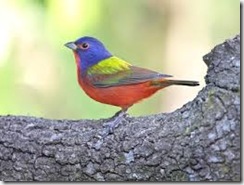

![images[9] images[9]](http://lh6.ggpht.com/-BkRgSuPw9rU/Ufe35_lPHCI/AAAAAAAA5Gg/YRufQ3U5UBI/images9_thumb1.jpg?imgmax=800)
![images[5] images[5]](http://lh3.ggpht.com/-s4su9RcW_PY/Ufe36rVBuGI/AAAAAAAA5Gw/LYtCNcK0-lU/images5_thumb.jpg?imgmax=800)
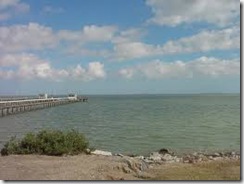
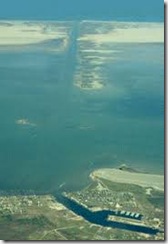
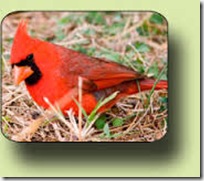


![images[4] images[4]](http://lh6.ggpht.com/-CyR01QtrbkE/Ufe4AEWKMiI/AAAAAAAA5IQ/IZ_k1iG3Xh8/images4_thumb2.jpg?imgmax=800)

 “As is often the case when 'desperate times call for desperate measures,' in the face of the Immiticide shortage, the pet healthcare community has been faced with finding other means for treating active heartworm infections in dogs.
“As is often the case when 'desperate times call for desperate measures,' in the face of the Immiticide shortage, the pet healthcare community has been faced with finding other means for treating active heartworm infections in dogs.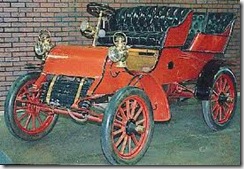
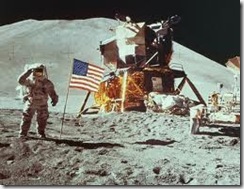
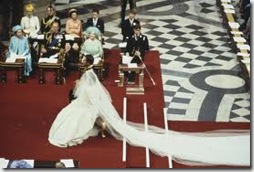

![images[4] images[4]](http://lh3.ggpht.com/-h2ogwqrQ05E/UfUW1jX3H-I/AAAAAAAA5EA/dREZHtz3YaY/images%25255B4%25255D_thumb%25255B1%25255D.jpg?imgmax=800)













